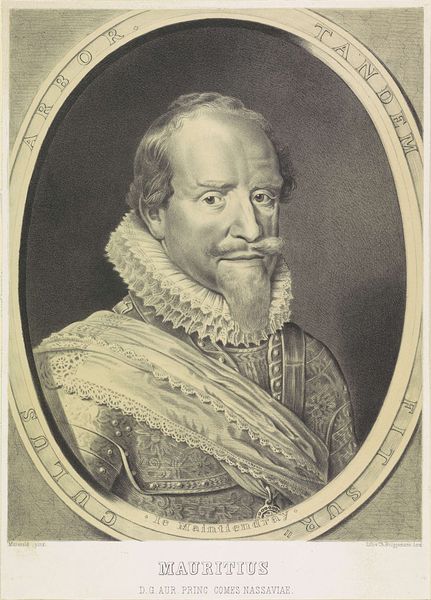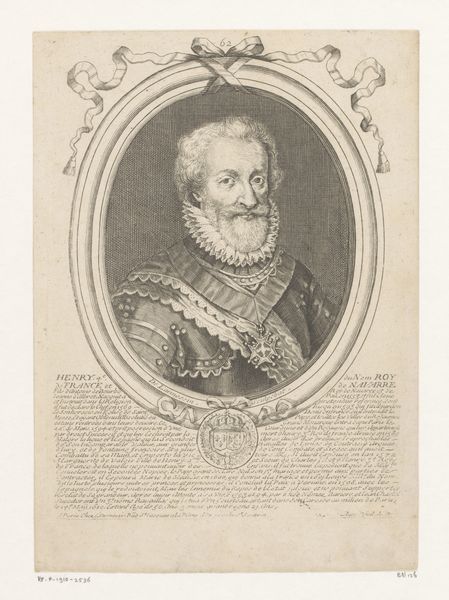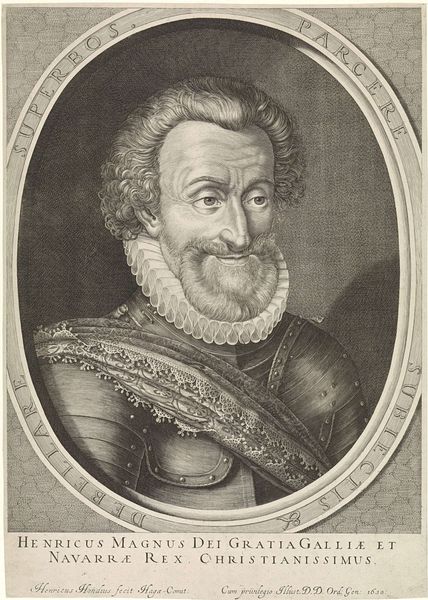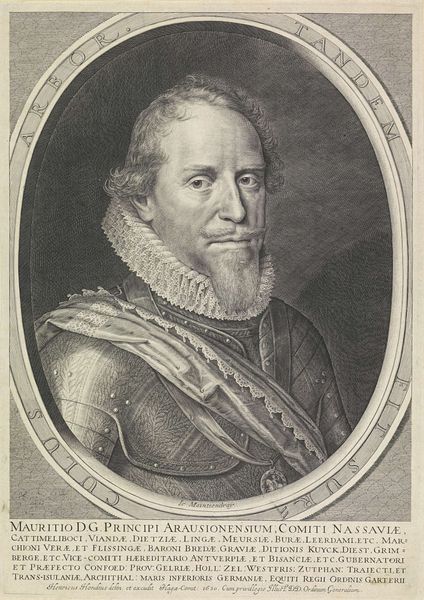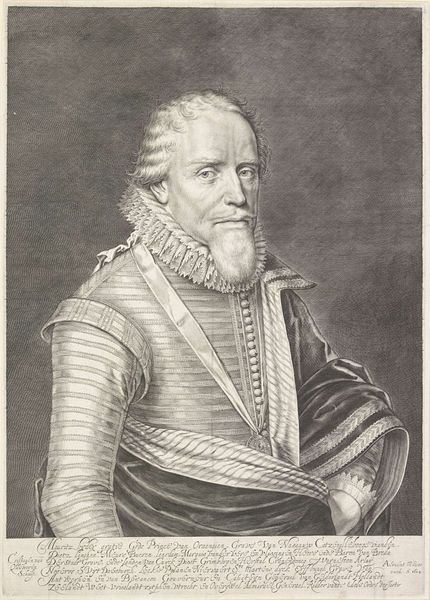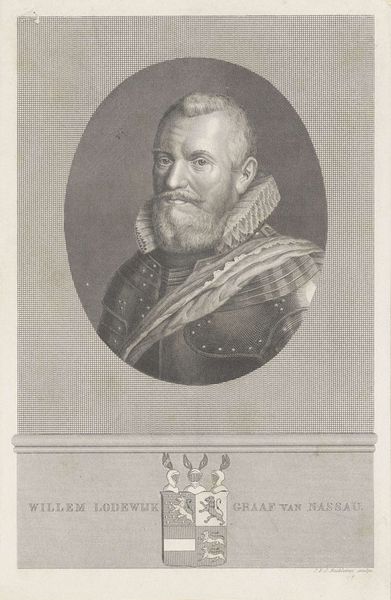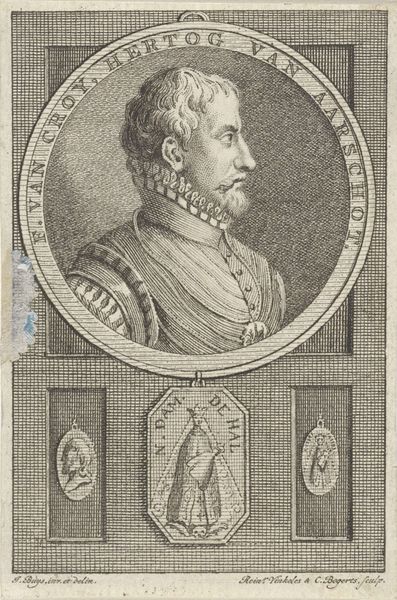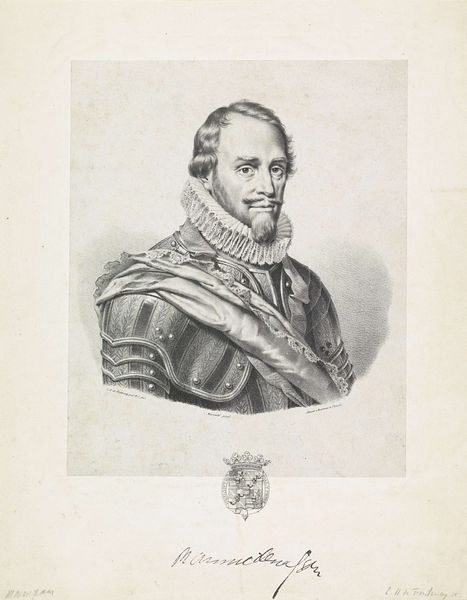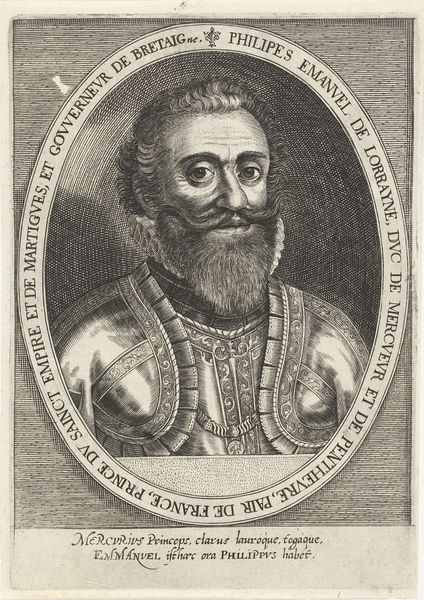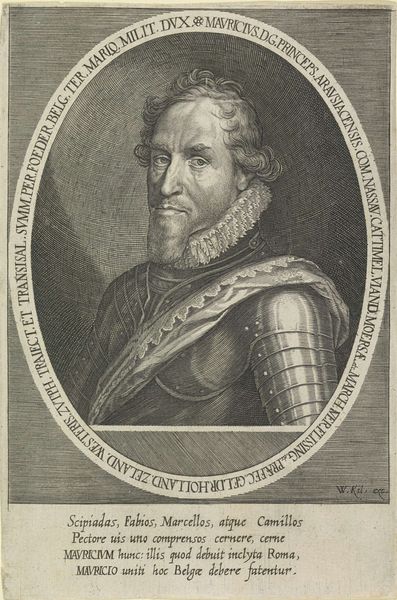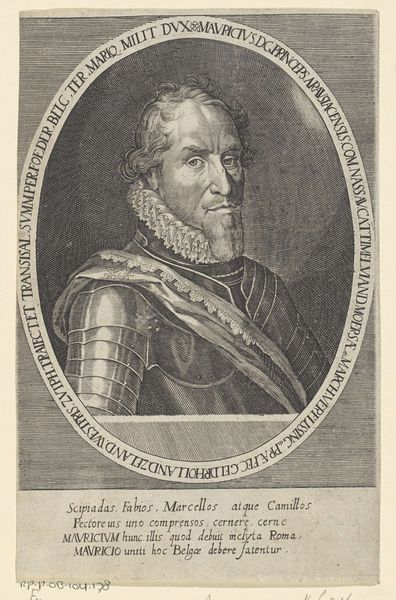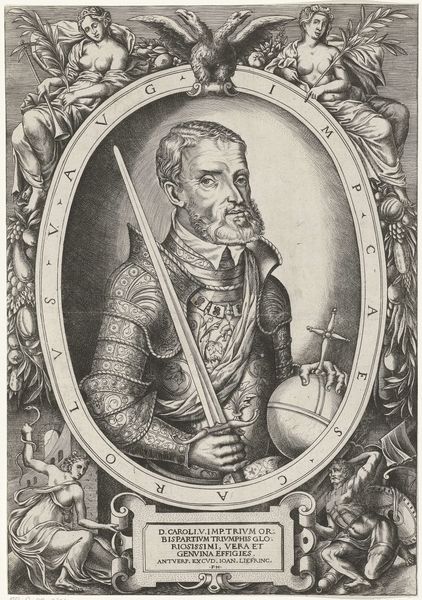
print, engraving
#
portrait
#
baroque
# print
#
old engraving style
#
figuration
#
line
#
history-painting
#
engraving
Dimensions: height 420 mm, width 294 mm
Copyright: Rijks Museum: Open Domain
Curator: Crispijn van den Queborn etched this likeness, “Portret van graaf Hendrik Matthias von Thurn,” in 1624. It’s currently held at the Rijksmuseum. Editor: My immediate sense is severity. The meticulous linework, while masterful, creates an almost impenetrable barrier, visually. There’s an intensity to the gaze, too. Curator: Indeed. The rigorous use of line dictates the entire visual field. Observe the hatching and cross-hatching that models the contours of his face, armor, and beard. The density of lines creates areas of deep shadow, playing with chiaroscuro to lend weight to the subject. Editor: It strikes me how much the symbolic language is embedded here. The Count’s attire speaks of military rank and authority, the delicate lace collar contrasting rather starkly with the polished breastplate, suggesting perhaps both power and refinement. Is this how he wished to be remembered? Curator: Note how van den Queborn uses the oval frame not merely as a border, but as a compositional element, its curvature echoed in the Count's face and shoulder line, thus harmonizing form and content. The lettering encircling the portrait further integrates text and image, acting as both descriptor and ornamentation. Editor: It’s also interesting that even the smallest details are charged with symbolic meaning. His prominent moustache, for instance, was undoubtedly intended as a signifier of masculine prowess during the Baroque era. It points back to very specific ideals surrounding leadership and nobility. Curator: Absolutely. Van den Queborn masterfully renders not just the physical appearance, but also projects the ideal image of the Baroque nobleman. Every choice, every stroke serves a deliberate purpose within the overarching design. Editor: Thinking about the impact that images can have in culture, I am interested by how portraits like these helped build powerful men and perpetuate historical legacies. What visual echoes might have sustained ideas about this figure, long after he was gone? Curator: Considering the controlled chaos that underscores Baroque artistic theory, this print shows exactly what van den Queborn brought to bear by structuring this portrait as precisely as he could. Editor: It seems this work reflects an intentional intersection of art and history to immortalize its subject in the Baroque style.
Comments
No comments
Be the first to comment and join the conversation on the ultimate creative platform.
